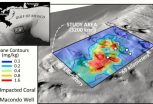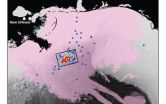INFORMATION:
Additional researchers on this project were Jessica S. Beiler and Julie R. Vallati, research coordinators; Laura M. Duda, assistant professor; and Tonya S. King, associate professor, Penn State College of Medicine.
This study was funded by an unrestricted grant to Penn State College of Medicine by Zarbee's Inc., the makers of agave nectar cough syrup. Paul served as a paid consultant to Zarbee's Inc. in 2012 and discontinued the relationship upon discussions of performing a clinical trial.
Placebo better than 'watchful waiting' when treating young children's coughs
2014-10-27
(Press-News.org) Both agave nectar and a placebo were more effective than no treatment for young children's cough symptoms, according to researchers at Penn State College of Medicine. The findings suggest that a placebo could help children more than "watchful waiting."
The Food and Drug Administration recommends against the use of over-the-counter cough and cold medications in children under two years old due to safety concerns and a lack of evidence for their effectiveness in this age group. As part of a voluntary change announced in 2008 by the Consumer Healthcare Products Association, most OTC cough and cold remedy labels state they should not be used in children under four.
"Pediatricians typically tell parents, 'Don't give your child anything,' or at most give them acetaminophen or ibuprofen," said Ian Paul, professor of pediatrics. "We know sick children are miserable and can't sleep, and parents are frustrated that they can't do anything to help."
Cough is a frequent symptom for infants and toddlers, and is one of the most common reasons children visit a healthcare provider. Little evidence supports use of OTC medicines for acute cough, particularly in younger children. In the absence of effective treatments, doctors report feeling pressured by some parents to prescribe antibiotics, which do not affect the viruses that cause colds and their symptoms.
In 2007, Paul's team published findings that honey was more effective than placebo for children's coughs. The findings have since been replicated by other researchers. However, honey is not allowed in children under age one due to risks of infantile botulism. Agave nectar shares similar physical properties with honey without known risk of infantile botulism.
To study the effects of agave nectar and placebo on children's coughs, the researchers looked at 119 children aged two to 47 months with non-specific acute cough, nighttime symptoms and an illness duration of seven days or less. The patients were selected from two outpatient, general pediatric practices. Three groups received either commercially available grape-flavored agave nectar, grape-flavored water or no treatment. Parents reported cough frequency, cough severity and other metrics, and child and parent sleep quality were measured the next day.
Both agave nectar and placebo were superior to no treatment, but no significant differences were detected between the two. The results are published today (Oct. 27) in JAMA Pediatrics.
"We found that placebo was better than doing nothing," said Paul. "For kids under age one, for which there is no other option, the findings may be particularly important."
In a small subgroup of 30 children under age one, agave was more effective than placebo. These results were clinically, though not statistically, significant and should be studied in a larger trial designed for this age group alone, Paul said.
Using a placebo for coughs in young children could reduce inappropriate antibiotic prescriptions.
Adverse results in both the agave nectar and placebo groups were rare.
"Perhaps this is a case where giving a placebo, such as agave nectar or sugar water, can help parents and their babies get through this annoying illness," Paul said. "This is a discussion that the pediatric community and parents are going to have to have."
ELSE PRESS RELEASES FROM THIS DATE:
Spotlighting the sun
2014-10-27
Astronomers with the National Science Foundation (NSF)-funded National Optical Astronomy Observatory (NOAO) captured pictures not only of Thursday's partial solar eclipse, but also of the "monster" sized active region or sun spot that has many comparing it to one of a similar size that occurred 11 years ago.
The sun spots were earlier reported by scientists with the NSF-supported National Solar Observatory. According to astronomers Frank Hill and Kiran Jain, "As of Oct 21, 2014, a very large active region is currently on the solar disk and producing flares as strong as ...
NASA's SDO observes more flares erupting from giant sunspot
2014-10-27
A large active region on the sun erupted with another X-class flare on Oct. 27, 2014 -- its fourth since Oct. 24. The flare peaked at 10:47 a.m. EDT.
X-class denotes the most intense flares, while the number provides more information about its strength. An X2 is twice as intense as an X1, an X3 is three times as intense, etc.
To see how this event may affect Earth, please visit NOAA's Space Weather Prediction Center at http://spaceweather.gov, the U.S. government's official source for space weather forecasts, alerts, watches and warnings.
Continuing a week's worth ...
Scientists' new analysis of plant proteins advances our understanding of photosynthesis
2014-10-27
A world without plants would be a world without oxygen, uninhabitable for us and for many creatures. We know plants release oxygen by absorbing carbon dioxide and breaking down water using sunlight through the process of photosynthesis. However, we know little about the mechanics of how plants create oxygen during photosynthesis. A breakthrough that will help advance our understanding of this critical ecological process was made recently by scientists at LSU.
"Without photosynthesis or oxygen, basically all recognizable life that we see in our landscape would be gone: ...
Two years after superstorm Sandy: Resilience in 12 neighborhoods
2014-10-27
Chicago, October 27, 2014—The Associated Press-NORC Center for Public Affairs Research today released the results of a major new study and related reports on the recovery from Superstorm Sandy in 12 New York and New Jersey neighborhoods hard hit by the 2012 storm.
It is the second AP-NORC study that has focused on the aftermath of Superstorm Sandy, with findings that emphasize the important role social factors play in a neighborhood's resilience: the ability of people and their social systems to survive, adapt and continue moving forward after a disaster. Funding ...
One-third of foster kids returned to their family are abused again
2014-10-27
This news release is available in French. One in three children who have been reunified with their families after being placed in foster care will be maltreated again, according to a study into Quebec's youth protection system by Marie-Andrée Poirier and Sonia Hélie of the University of Montreal's School of Social Services. The study, the first of its kind in the world, was undertaken in the wake of a new law intended to improve the family stability of youth receiving child protection services.
The researchers, who are also affiliated with the Centre jeunesse ...
Where did all the oil go?
2014-10-27
Due to its unprecedented scope, the damage assessment caused by the 2010 Deepwater Horizon spill in the Gulf of Mexico has been a challenge. One unsolved puzzle is the location of 2 million barrels of submerged oil thought to be trapped in the deep ocean.
UC Santa Barbara's David Valentine and colleagues from the Woods Hole Oceanographic Institute (WHOI) and UC Irvine have been able to describe the path the oil followed to create a footprint on the deep ocean floor. The findings appear today in the Proceedings of the National Academy of Sciences.
For this study, the ...
Whites of their eyes: Study finds infants respond to social cues from sclera
2014-10-27
Humans are the only primates with large, highly visible sclera – the white part of the eye.
The eye plays a significant role in the expressiveness of a face, and how much sclera is shown can indicate the emotions or behavioral attitudes of a person. Wide-open eyes, exposing a lot of white, indicate fear or surprise. A thinner slit of exposed eye, such as when smiling, expresses happiness or joy. Averted eyes, as well as direct eye contact, can mean several things. So the eye white, or how much of it is shown and at what angle, plays a role in the social and cooperative ...
'Integrated Play Groups' help children with autism
2014-10-27
It's an often-agonizing challenge facing any parent of a child with autism: How can I help my son or daughter socialize with his or her typically developing peers? The solution, SF State's Pamela Wolfberg found, may lie in a different type of playgroup that focuses on collaborative rather than adult-directed activities.
A new study shows that "Integrated Play Groups," or IPGs, developed by Wolfberg over several years, are effective in teaching children with autism the skills they need to interact with their peers and engage in symbolic play such as pretending. In IPGs, ...
Where did the Deepwater Horizon oil go? To Davy Jones' Locker at the bottom of the sea
2014-10-27
Where's the remaining oil from the 2010 Deepwater Horizon disaster in the Gulf of Mexico?
The location of 2 million barrels of oil thought to be trapped in the deep ocean has remained a mystery. Until now.
Scientist David Valentine of the University of California, Santa Barbara (UCSB) and colleagues from the Woods Hole Oceanographic Institution (WHOI) and the University of California, Irvine, have discovered the path the oil followed to its resting place on the Gulf of Mexico sea floor.
The findings appear today in the journal Proceedings of the National Academy ...
From the mouths of ... young fireballs
2014-10-27
The first images of a nova during its early fireball stage--when it ejects material, and gases expand and cool--show that this activity is more complicated than predicted.
That is the conclusion, published in the current issue of Nature, from a research collaboration led by Georgia State University Astronomer Gail Schaefer that includes 37 researchers (many who are National Science Foundation (NSF)-funded) from 17 institutions. The researchers observed the expanding thermonuclear fireball from a nova that erupted last year in the constellation Delphinus.
"This is ...





